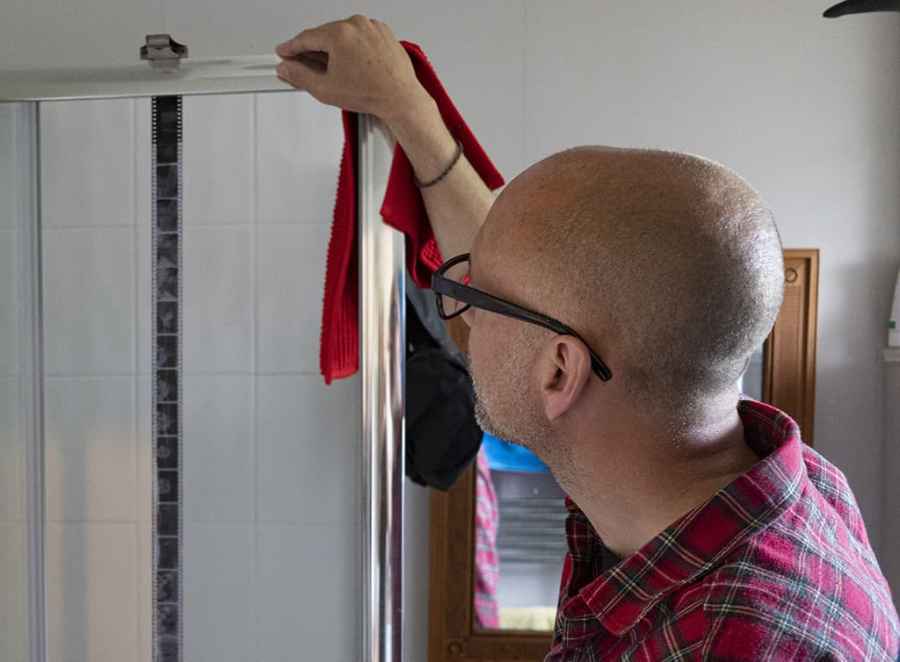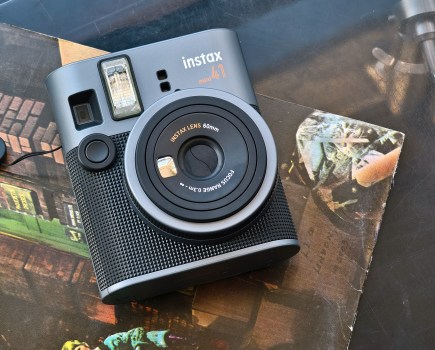With the film revival in full swing, there’s growing interest in home film developing. Benedict Brain and Geoff Harris show how easy it is to develop a roll of standard black & white film in the kitchen
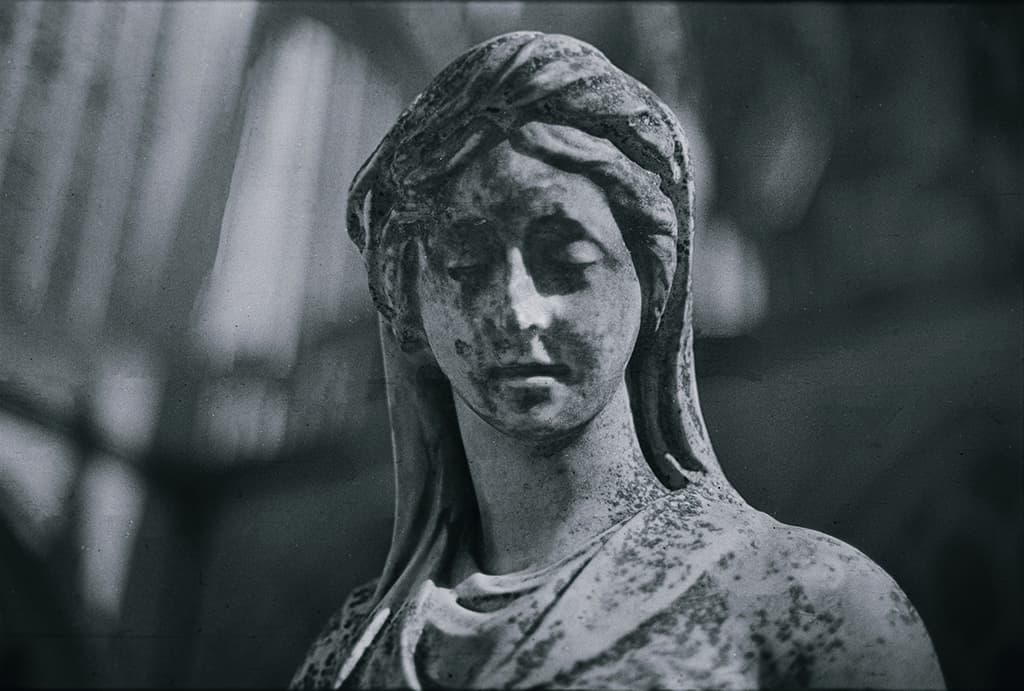
Digital film emulation presets are good, but ‘proper’ film has a unique character
Nikon F3, 50mm lens at f/8, 1/125sec, ISO 400
If you see somebody under 35 with a camera these days, there is a good chance they are using a film device, sometimes one made before they were even born. The film revival has been bubbling away for a few years now, and is proving to be much more than a hipster fad; analogue continues to have a cultural ‘moment,’ as people seek an alternative to bland, digital perfection and the ubiquity of smartphones.
For these modern-day flâneurs, wandering around with a vintage Leica or Nikon is one thing, but then comes the challenge of developing the actual film. While there is a wide range of labs who’ll work on your rolls and even digitise the images, there is something particularly rewarding about developing the film yourself – this also satisfies the current obsession with anything hand-made or artisanal.
Developing black & white film at home is particularly straightforward, so in this tutorial, we’ll show (or remind you) how to do it in your kitchen. Some specialist equipment is needed, but this is easily obtained and relatively cheap (see right). You also need to be patient and prepared to learn from your mistakes.
Loading the film onto the reels is a real skill, for example, so practice with some old, unwanted films first. If the film touches on the reel, you can get nasty marks. For digitising negatives, either scan them or photograph them using a lightbox. Here we used a Sigma fp L and 70mm macro f/2.8 lens, mounted on a Kaiser copy stand.

The negatives were held over a lightbox using a negative holder (a number are available) and then shot digitally for further editing, if needed, and sharing.
The gear you will need
For this quick tutorial we shot a roll of Ilford FP4 black & white film, which is ideal for home development, along with the following equipment – easily available from suppliers such as Fotospeed:
* A darkbag – essentially, a double-zipped bag with light-tight arms
* A developing tank with a 35mm or 120mm reel. We used a central-loading stainless steel one, but plastic Paterson ones with ball-bearings are sometimes easier to use.
* A one-litre measuring jug and a thermometer
* A film squeegee to remove excess water from the negatives
* Scissors to cut the negatives into strips of six (which you can store in negative sleeves) and film clips for hanging them.
You should be able to obtain all this for under £100 or you might find an old complete home darkroom on eBay. Developing colour film at home is a more complex procedure, which we will turn to at a later date.
Kitchen made: developing black and white film at home
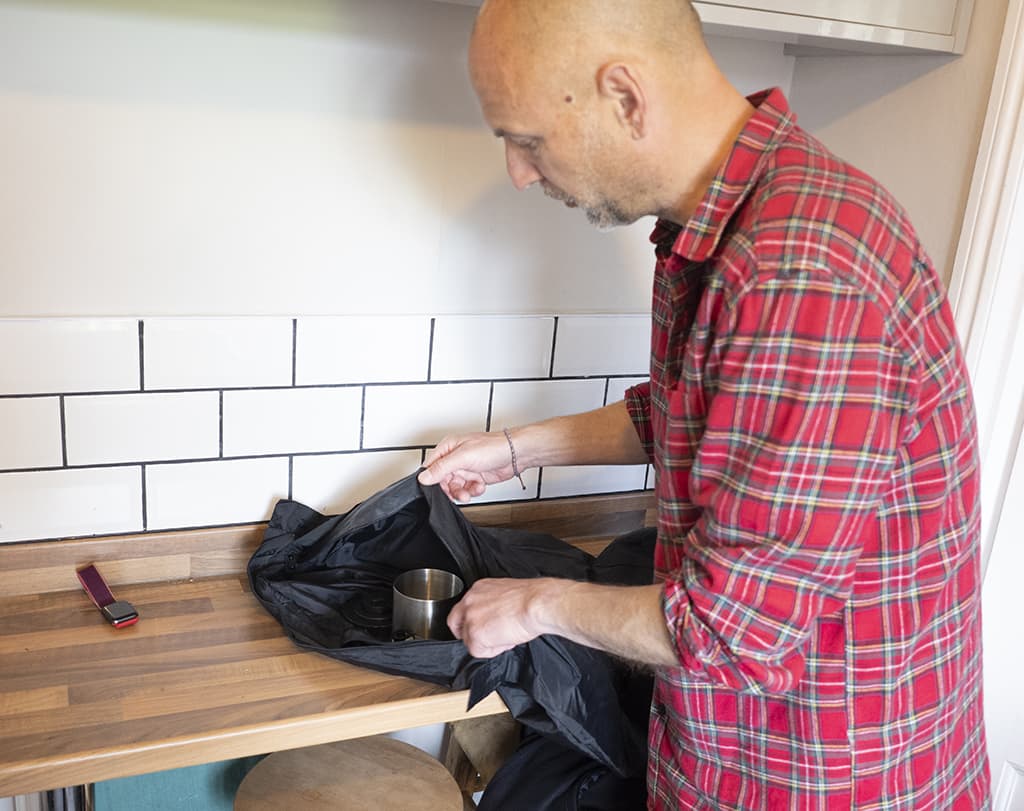
1 Designate a dry/wet area
A kitchen with mixer tap is ideal. First, take a light-tight bag and put in your film, a bottle opener, scissors, the reel for the developing tank and the tank. The light-tight bag is sealed while you’re loading the film into the tank; the tank is open until you put the film onto the reel, and then you close it.

2 Zip it up
Find the film canister lid and pop it off with the bottle opener (or if you prefer, you can use a film extractor, widely available on eBay). Load the film onto the reel. This requires a certain amount of care and dexterity, so practice on a roll of old film beforehand. Take it as slowly as you need to.
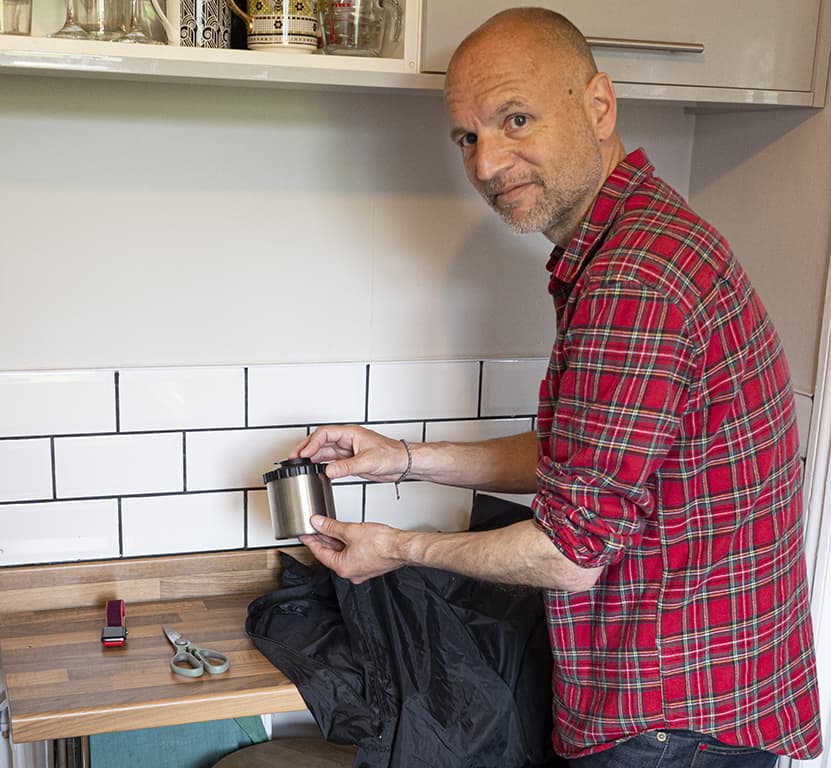
3 Be detached
Detach the film from the central spool (cut it off) and then double check the film is sitting snugly in the grooves of the reel. Ensure the film is not touching as it’s rolled round as you can end up with nasty marks. Put the reel in the developing tank, secure the tank lid and then take the tank out.
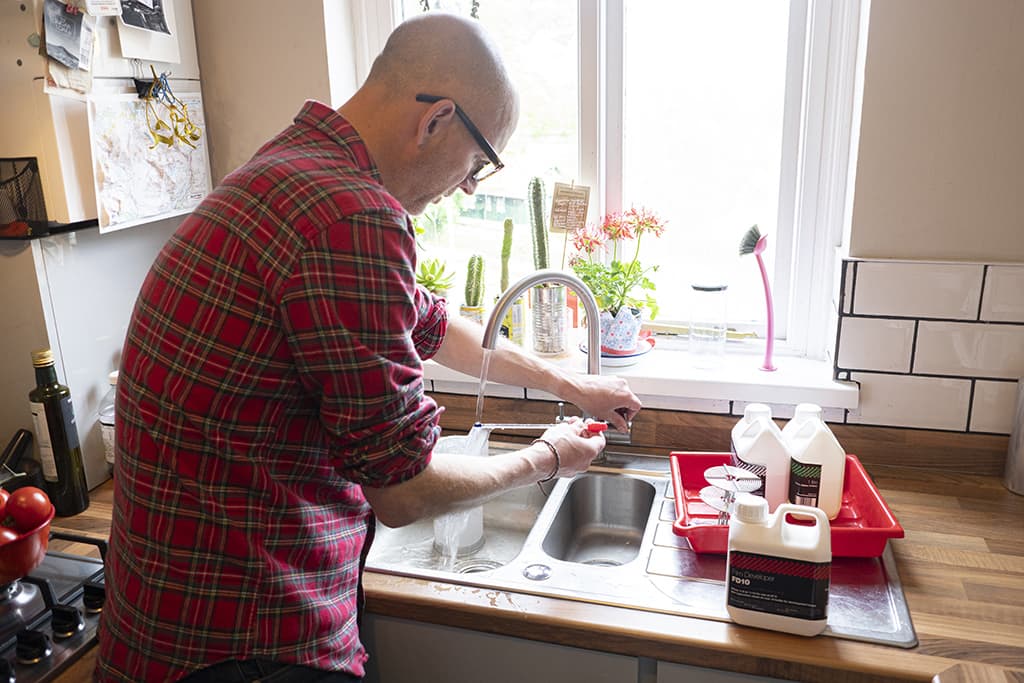
4 Get consumables ready
Take your film developer, stop bath, fixer and a film wash or rinse. First, mix the developer, having checked the recommended dilution (eg. one part developer to nine parts water). Use a jug and a thermometer to set the water at 20 degrees, which is suitable for most black & white development.
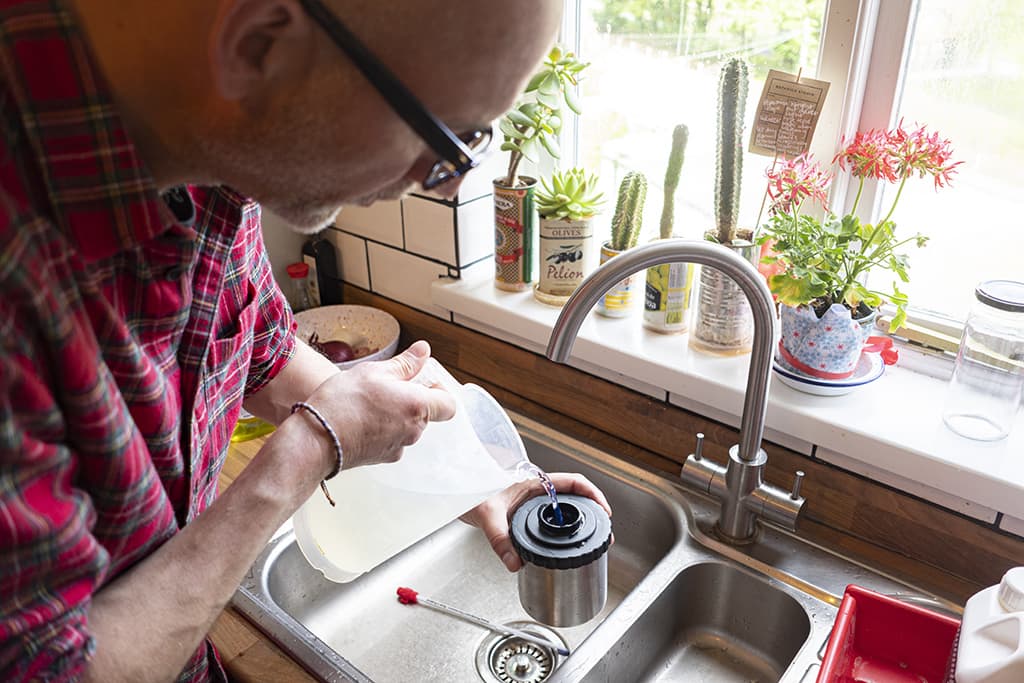
5 Pour what it’s worth
Ensure you remove the right tank lid (the light-tight lid, not the main lid) and pour the chemicals in. We’re developing the Ilford film for seven minutes but you can develop longer for greater contrast. Every 30 seconds, invert the tank and tap it to remove air bubbles. Hold the lid on tightly as an extra precaution.
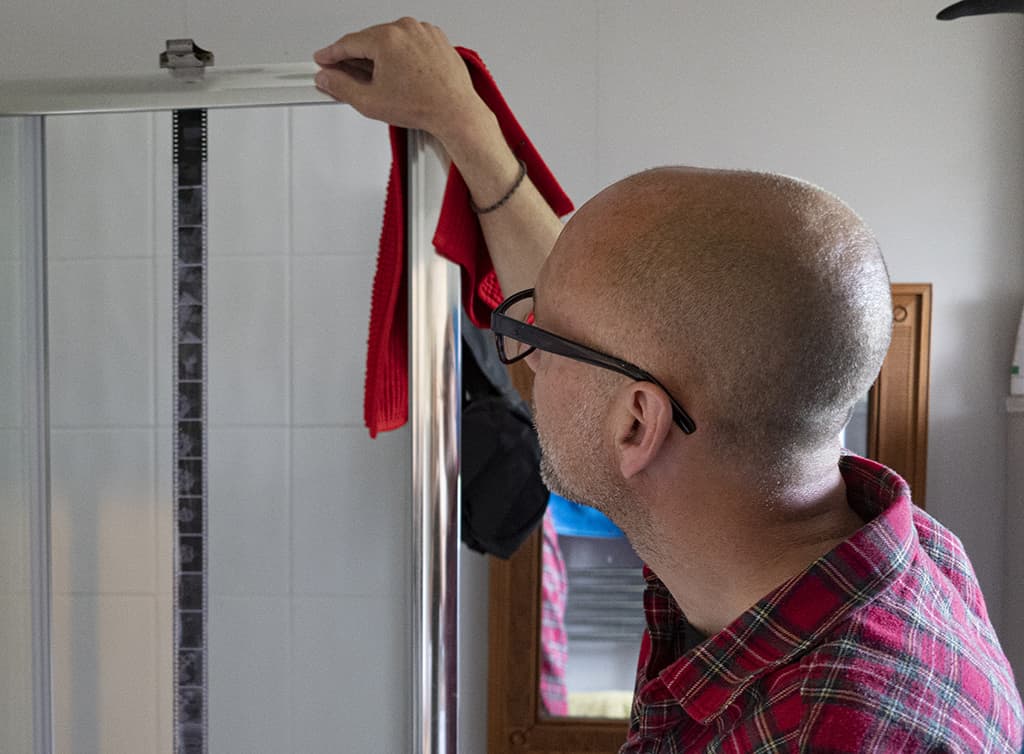
6 Hung out to dry
Prepare your stop bath, which here is 1 to 19 dilution (follow the maker’s instructions). Empty the tank of developer and pour in the stop bath. Then, pour in the fixer, which you can re-use. Remove the finished negatives and wash them under a tap for 10 minutes. Then hang to dry; a dry shower cubicle works well.

